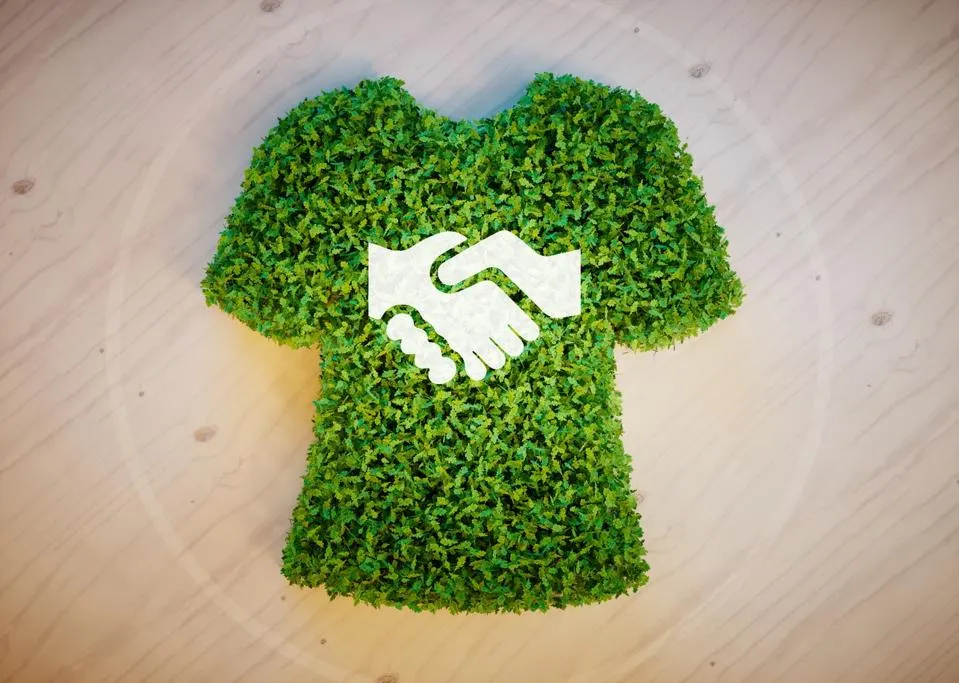The Rise of Sustainable Fashion in America
Over the past few years, sustainable fashion has transitioned from a niche trend to a significant movement in the United States. With the increasing awareness of climate change, pollution, and the environmental impact of the fashion industry, more American consumers are seeking eco-friendly alternatives when it comes to their wardrobes. The fashion industry is one of the largest polluters in the world, contributing to waste, water usage, and toxic emissions. However, a growing number of designers, brands, and consumers are now choosing sustainability over mass production and disposable clothing.
The Impact of Sustainable Fashion on the American Market
Sustainable fashion in America is more than just about choosing clothes made from organic materials. It’s about rethinking the entire process of fashion design, production, and consumption. Brands are focusing on using recycled materials, adopting eco-friendly manufacturing processes, and embracing ethical labor practices. In addition, there is a strong emphasis on transparency, where brands openly share their sourcing, manufacturing, and waste management practices with consumers.
One of the most notable impacts of sustainable fashion is the rise of slow fashion. Slow fashion is an alternative to fast fashion, which is known for its quick turnover of trends and cheap, disposable clothing. Slow fashion encourages consumers to buy fewer, higher-quality pieces that are made to last longer, rather than purchasing countless cheap, low-quality garments that end up in landfills.

Key Brands Leading the Sustainable Fashion Movement in the U.S.
Several American brands have become trailblazers in the sustainable fashion movement. These brands not only focus on environmental impact but also strive to promote social justice and fair labor practices. Here are some of the key players leading the charge in the U.S.:
- Patagonia: Known for its commitment to environmental responsibility, Patagonia has been a pioneer in sustainable fashion for years. The company uses recycled materials, promotes fair labor practices, and encourages customers to repair and reuse their clothing rather than purchasing new items.
- Everlane: Everlane has built a reputation for transparency in its production processes. The company works with factories that meet ethical labor standards and uses sustainable materials such as organic cotton and recycled polyester.
- Reformation: Reformation is a popular brand that focuses on creating stylish and sustainable clothing. They use eco-friendly materials and promote waste reduction through a circular fashion model. Reformation has also committed to reducing their carbon footprint by using renewable energy sources.
- Allbirds: Known for their eco-friendly footwear, Allbirds uses sustainable materials such as merino wool, eucalyptus tree fiber, and sugarcane. The brand is committed to carbon neutrality and encourages consumers to make sustainable choices in their footwear.
The Role of Consumers in the Sustainable Fashion Movement
While brands play a crucial role in the sustainable fashion movement, consumers also have a significant impact on shaping the future of fashion. The rise of conscious consumerism in the U.S. has led to more people making purchasing decisions based on a brand’s environmental and social impact. This shift has encouraged brands to adopt more sustainable practices to meet the growing demand for eco-friendly products.
Consumers are becoming more aware of the environmental cost of fast fashion and are choosing to invest in high-quality, long-lasting pieces instead of chasing after fleeting trends. Thrift shopping, second-hand clothing, and clothing swaps have also gained popularity as ways to reduce waste and prolong the life of garments. The rise of online platforms like Poshmark and Depop has made it easier than ever to buy and sell pre-owned clothing, further promoting the circular fashion model.
Challenges and Opportunities for Sustainable Fashion
Despite the growth of the sustainable fashion industry, challenges remain. One of the biggest obstacles is the higher cost of sustainable products. Ethical and eco-friendly materials often come with a higher price tag, which can make sustainable fashion less accessible to a wider audience. Additionally, the widespread popularity of fast fashion and its low prices continues to make it a challenge for sustainable brands to compete on cost.
However, there are also many opportunities. As more consumers prioritize sustainability, there is growing potential for the industry to become more mainstream. Innovations in textile recycling, biodegradable materials, and new sustainable manufacturing techniques are helping to lower costs and increase the accessibility of sustainable fashion. Furthermore, with the rise of digital platforms and social media, brands can now engage directly with consumers to promote their sustainability efforts, creating a more informed and empowered customer base.
The Future of Sustainable Fashion in the U.S.
Looking ahead, sustainable fashion is expected to continue its upward trajectory in the United States. The growing awareness of the environmental and social impact of the fashion industry, coupled with innovations in sustainable practices, is driving change across the entire industry. As more brands adopt sustainable practices and consumers make eco-conscious decisions, the fashion landscape in the U.S. will become increasingly aligned with sustainability.
The future of fashion is not only about creating stylish clothes, but also about making ethical and environmentally responsible choices. In 2025 and beyond, the hope is that sustainable fashion will become the norm rather than the exception, helping to reduce the fashion industry’s negative impact on the planet.
Conclusion
Sustainable fashion is an exciting and necessary movement that is reshaping the way we approach clothing in the United States. With a growing emphasis on ethical production, eco-friendly materials, and conscious consumerism, the future of fashion looks bright for both the planet and people. While challenges remain, the continued rise of sustainable fashion shows that change is possible, and it’s happening now. Whether through brands like Patagonia, Everlane, or Reformation, or through consumer choices, the trend towards sustainability is here to stay, and it is making a meaningful difference in the world of fashion.